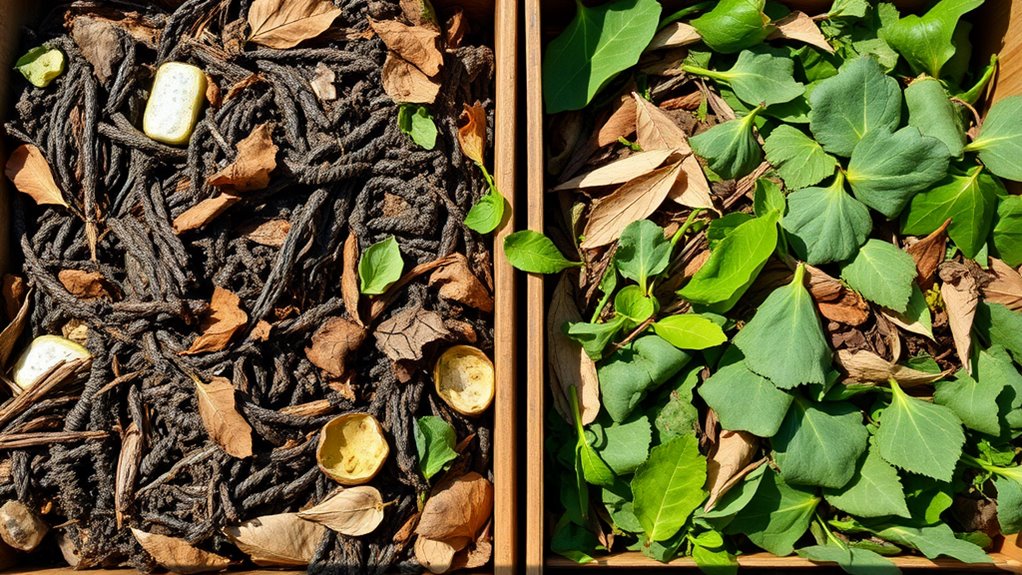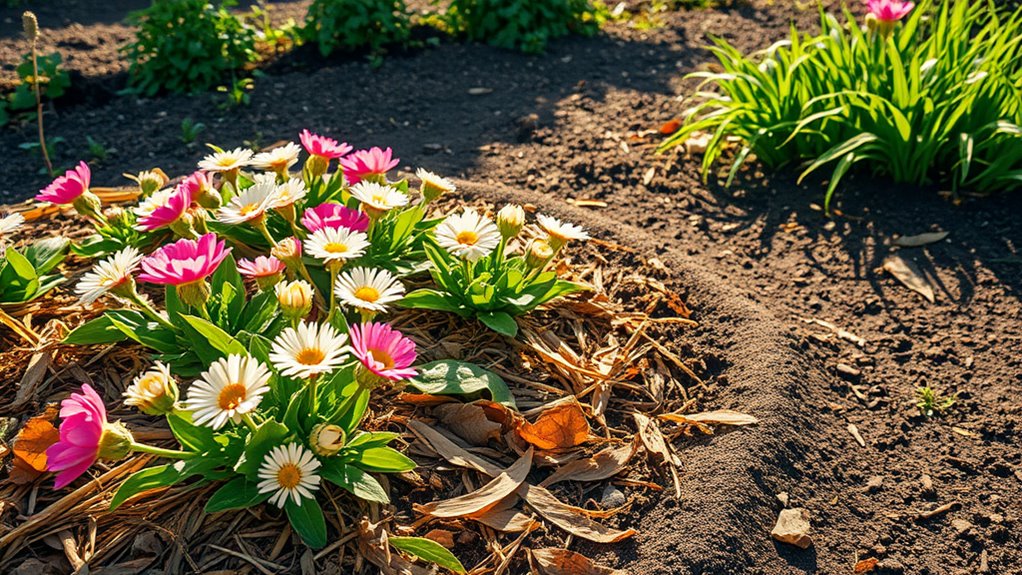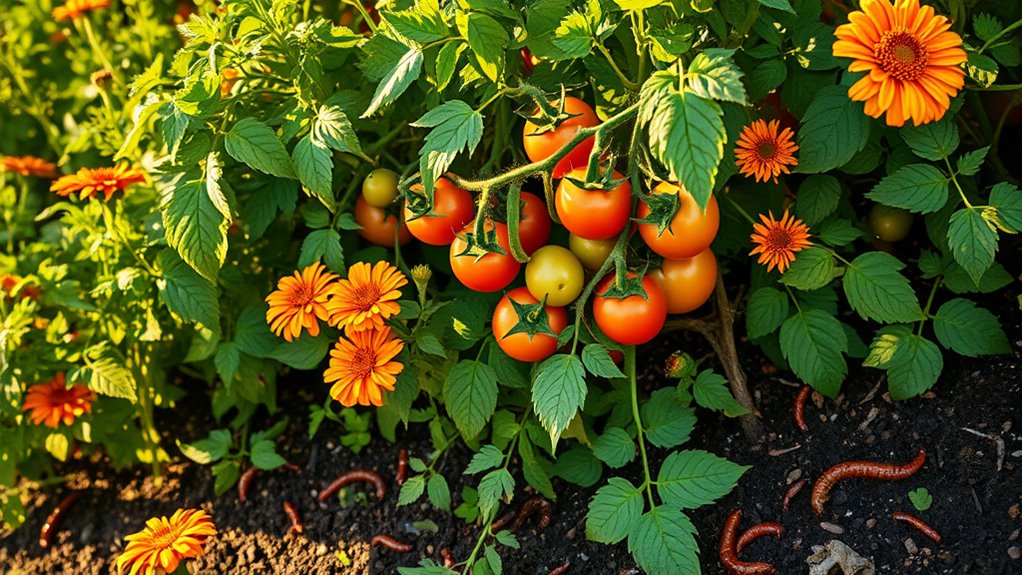Why You Should Always Mulch in the Fall
You’ll protect your garden’s roots from freezing temperatures by mulching in the fall, retaining moisture and enriching soil with decomposing organic matter. It’ll suppress weeds, improve soil structure, and maintain stable temperatures to shield plants from harsh winds and frost. Plus, it’s simple—apply 2-4 inches after the first frost, avoiding stems. Explore these tips to see how it builds long-term soil health and resilience.
Key Takeaways
- Mulching in fall protects plant roots from freezing temperatures and frost damage.
- It retains soil moisture, helping prevent drought stress during winter months.
- Mulch enriches soil with organic matter as it decomposes, boosting nutrient levels.
- It suppresses weeds and reduces erosion, promoting a healthier garden.
- Mulching maintains stable soil temperatures, supporting perennial plants through winter.
Benefits of Fall Mulching
As winter approaches, you’ll protect your garden’s roots by applying mulch in the fall, which insulates soil against freezing temperatures and retains moisture to prevent drought stress. Moreover, fall mulching aids in preparing your garden for the colder months by fostering organic decomposition that enriches the soil over time.
To maximize these benefits, follow key fall mulching tips: apply a 2-4 inch layer of organic materials like shredded bark or leaves around plants, avoiding direct stem contact to prevent rot.
This suppresses weeds, reduces erosion, and maintains even soil temperatures, helping your perennials survive harsh weather.
You’ll notice healthier growth come spring, making fall mulching a smart, effortless routine.
Embracing fall mulching can unlock the magic of mulch, improving soil health for a thriving garden.
Enhancing Soil Health With Mulch
Mulch not only shields your garden through winter but also boosts soil health over time. As it breaks down, it enriches your soil with organic matter, fostering beneficial microbes that enhance nutrient availability. This approach utilizes backyard solutions to enhance your soil naturally.
You’ll notice improved soil structure, with better aeration and drainage, reducing compaction from foot traffic or rain. Apply a 2-4 inch layer of materials like shredded leaves or bark to retain moisture without smothering roots, preventing erosion on sloped areas.
This practice minimizes weed growth, letting your soil focus on supporting plant vitality year-round. Regularly refresh mulch to maintain these long-term benefits. Embracing this mulching technique ensures your garden remains consistently moist and thriving throughout the growing season.
Protecting Plants From Winter Elements
Winter’s harsh winds and freezing temperatures can damage your plants, so you’ll need to use mulch as a protective barrier that insulates roots and prevents soil from thawing and refreezing.
This insulation maintains stable soil temperatures, shielding roots from frost damage and extreme cold.
Mulch acts as a windbreak, reducing evaporation and preserving moisture to keep plants hydrated.
It minimizes freeze-thaw cycles that cause soil heaving, which can uproot or stress plants.
Moreover, combining mulching with watering techniques can optimize plant hydration and support overall garden health.
By switching to different mulch types, you can enhance your garden’s growth and overall plant health as demonstrated in effective mulching techniques.
Practical Tips for Mulching in Autumn
As autumn sets in, you’ll find that timing your mulching correctly—ideally after the first frost but before the ground freezes—helps lock in soil moisture and protect roots effectively.
To make mulching successful, follow these practical steps:
-
Select appropriate mulch: Choose materials like shredded bark or leaves that break down slowly and suppress weeds without compacting soil.
-
Measure depth correctly: Apply a 2-4 inch layer to insulate roots, but avoid piling against plant stems to prevent rot.
-
Prepare the bed: Clear debris and weeds first, ensuring the soil is slightly moist for better adhesion.
-
Distribute evenly: Use a rake to spread mulch uniformly around plants, creating a protective barrier without overcovering.
-
Monitor and adjust: Check periodically; add more if needed, but don’t let it become a habitat for pests.
Long-Term Garden Improvements From Fall Mulching
Fall mulching delivers enduring benefits that enhance your garden’s health over multiple seasons. Proper soil preparation is essential for adapting these benefits to diverse environmental conditions.
You’ll build richer soil as organic materials decompose, boosting nutrient levels and fostering beneficial microbes that support plant growth year after year.
It minimizes erosion, conserves moisture during dry spells, and suppresses weeds, reducing future maintenance.
Over time, this practice improves drainage and soil structure, leading to stronger roots and more resilient plants.
Additionally, fall mulching supports sustainable fertilizing by using organic materials as natural fertilizers.





